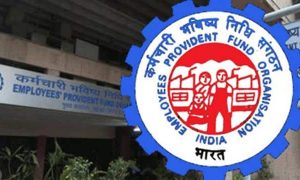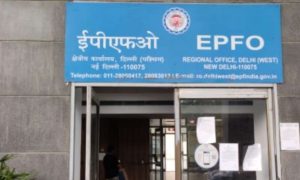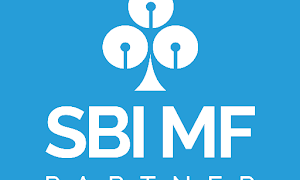The Employees’ Provident Fund Organisation (EPFO) earlier this week came out with a procedure to enable subscribers and their employers to jointly apply for higher pension under the employees’ pension scheme (EPS). In November 2022, the Supreme Court had upheld the Employees Pension (Amendment) Scheme 2014, following which the retirement fund body issued a circular in December 2022 to its field officers to implement the SC order on higher pension. Experts explain everything you need to know about the SC order on higher pension:
What Was The Supreme Court Order?
The Supreme Court had in November 2022 upheld the Employees Pension (Amendment) Scheme, 2014. The Employees Pension (Amendment) Scheme, 2014, of August 22, 2014, had raised the pensionable salary cap to Rs 15,000 a month from Rs 6,500 a month, and allowed members along with their employers to contribute 8.33 per cent of the actual salaries (if it exceeded the cap) towards the EPS.
Read More: How to check EPF passbook balance check online and through text message
Sanket Jain, partner at Pioneer Legal, “The judgment has offered a one-time relief to employees who were members of the pension scheme as on September 1, 2014 and had been making a higher contribution i.e., contribution on their actual salary if it was higher than Rs 15,000 per month. These employees are now required to give a joint declaration, along with their employer, to the EPFO in order to continue making contributions on the higher amount.”
What did the Supreme Court Say in Its Judgment In November 2022?
Sanjeev Kumar, partner at Luthra and Luthra Law Offices India, said the high courts of Delhi, Rajasthan and Kerala had passed verdicts striking down the Employees Pension (Amendment) Scheme 2014, and on being approached by effected employees, the Supreme Court in its Judgment of November 2022 titled ‘Employee Provident Fund Organsation and Anr. v. Sunil Kumar and Ors.’ (EPFO Judgment) had upheld the validity of Amendment Scheme.
Further, the apex court had extended the cut-off date to exercise joint option under the EPS by four months for the employees who could not exercise the said option earlier. The apex court had also held that the condition for additional contribution by employees as ultra vires the Employees’ Provident Funds and Miscellaneous Provisions Act, 1952.
Why Was the Limit Raised?
The wage ceiling of Rs 6,500 per month as provided in the employees’ pension scheme was revised in 2014 to Rs 15,000 per month, to provide a wide coverage to formal sector employees who were not the part of the scheme earlier and also to help employees after their retirement.
Read More: EPF Withdrawal Process Online: Know how to fill EPF form – Step-by-step guide
What is the Joint Option Scheme? What Is The Contribution Ratio of Employer and Employee?
Luthra and Luthra’s Sanjeev Kumar said the EPS as amended in 2014 stipulates a fresh option to be exercised jointly by the employer and employee to continue to contribute on salary exceeding Rs 15,000 per month. “Under the joint option, the pensionable salary for the existing members who prefer such fresh option shall be based on the higher salary/ actual basic salary and will not be limited to Rs 15,000 per month.”
As per the existing scheme, both the employer and employee contribute 12 per cent of the employee’s basic salary and dearness allowance to the employees’ provident fund. Employees do not contribute from their share of PF towards the pension scheme. The employee’s entire part goes to EPF, while the 12 per cent contribution made by the employer is split as 3.67 per cent contribution to EPF and 8.33 per cent contribution to EPS.
Who is an Eligible Employee for this Scheme?
The EPFO said the circular is related to such employees who contributed on higher wages under the EPF Scheme, and had further exercised their option prior to their retirement but their option request was explicitly denied by concerned office of the RPFC or the contribution on higher salary was refunded/ diverted back to provident fund accounts.
The Supreme Court in November in its ruling said, “the employees who had retired prior to September 1, 2014, without exercising any option under…the pre-amendment scheme have already exited from the membership thereof. They would not be entitled to the benefit of this judgment.”
It also said the employees who have retired before September 31, 2014, upon exercising option under 1995 scheme will be covered by the provisions of the pension scheme scheme as it stood prior to the amendment of 2014.
Will the Contribution be 8.33 per cent of Rs 15,000, or can it go above 15,000 also?
Luthra and Luthra’s Sanjeev Kumar said that for the employees who had opted for the joint option or higher contribution, the contribution can now go up to 8.33 per cent of the actual basic salary of the employee instead of Rs 15,000.
Sanket Jain, partner at Pioneer Legal, said, “As per the EPFO 2014 notification, employees wishing to contribute on higher salary were required to contribute 1.16 per cent on the salary exceeding Rs 15,000. However, the SC has held that the employee should not contribute above the wage ceiling of 15,000 and, hence, is ultra vires. However, as a stopgap measure, the judgement has given a period of 6 months from the date of ruling for the government to decide how to handle the contribution calculation above the wage ceiling of 15,000.”
Who Should Opt for It?
Sanjeev Kumar said all persons who were a member of the EPS as on September 1, 2014 should opt to apply for the scheme, moreso, the time allowed by the Apex Court is nearing an end.
Who Should Avoid It?
Sanjeev Kumar said, “People wo are not covered as the cut-off date as per the cut-off date set by the Apex Court should not apply for there being chances of rejection.”
Could There be Any Consequences of Going for the Higher Limit?
Luthra and Luthra’s Sanjeev Kumar said all persons, who are eligible, and their finances permit them to opt for the higher limit should definitely opt for the higher limit, considering their future and the fact that EPS may provide a better value. “However, there is a grey area, whether once opted for would there be an option to downgrade from this.”



































